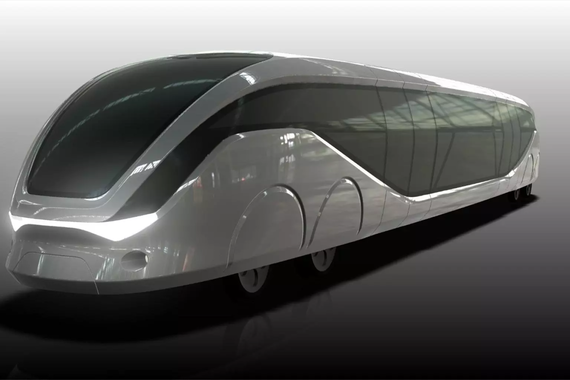
Major boost for advanced rapid transport in MK
Milton Keynes Council has secured funding for a study on High Speed Rail Network in Milton Keynes
The INTENSIFY project innovatively addresses a key challenge for European cities and regions: how to energise citizens and communities to achieve more carbon reduction.
The need is both great and urgent. The EU, and thus regions and municipalities, are committed by international treaty to achieve ambitious carbon reduction targets. But public authorities cannot do this alone. First, they directly control only a small % of the emissions; so they must find ways to energise others. Second, the targets are so ambitious that they require significant behaviour change that cannot be imposed on people. Third, the will of the people determines the courage of policy-makers; so a change of attitude (“who owns the problem?”) is essential. Finally, concerted collective action may create the opportunity for innovative financing, thus creating a virtuous circle by incentivising citizens and communities to do more. Efforts must be intensified.
The project’s objective is to reduce carbon emissions from all sectors, by empowering and energising local communities. We will improve regional policies by:
* analysing partners’ plans through four Thematic Events ,
* identifying good practices that will improve these plans, studying them through Study Visits, importing them via special workshops and Regional Action Plans.
* developing social platforms and other community-engagement mechanisms, using these to reduce carbon emissions in all sectors, and to attract private investment
* building the capacity of all relevant public authorities including ERDF Managing Authorities
The project’s main outputs will be focused on new methods of community engagement through:
* New projects that use local stakeholder platforms to improve local policies and incentivise communal behaviour on carbon reduction issues
* Improved governance by delivering policies that have citizen support for more carbon reduction and empower local communities to take action
€1,905,066.00
Low-carbon economy
The Intensify project seeks to change community and individual behaviour so as to bring about an increase in the intensity of effort by citizens to reduce carbon emissions.
MAIN FEATURES
The specific IP identified by the policy instrument are 4b " Promoting energy efficiency and the use of renewable energy in business”, 4c “Support for energy efficiency, intelligent energy management and the use of renewable energy in public infrastructures, in public buildings and in the housing sector” and 4e ”Promotion of low carbon strategies for all types of territories, including the promotion of sustainable multimodal urban mobility and adaptation measures”. It addresses a broad scope of sectors, public and private, relevant for climate change actions (energy efficiency and renewable solutions).
WHY IT SHOULD BE IMPROVED
The IP targets the main economic sectors relevant for the policies addressed. It does not provide tools or objectives for synergies between the different sectors. Cooperation amongst sectors towards a common local and national mitigation goal is also not sufficiently addressed. In Almada, it has been identified that roughly 95% of the effort needed to reach the goals for the overall municipality (20% reduction on GHG emissions in 2020 and 80% in 2050) are upon sectors not directly under the management of the city council. The cooperation between the sectors and stakeholders can be especially relevant for overcoming market barriers; the Paris City Hall Declaration, which Almada endorsed, implies not only a reduction of 80% on GHG emissions but also that cities commit to engaging the private sector and civil in low-emission projects.
MAIN FEATURES
The Southern & Eastern Regional Operational programme sets out a development strategy and a corresponding set of (ERDF co-funded) investment priorities for the Southern region of Ireland. TO is N 4 – Low Carbon Economy Specific Objective (C) is to support energy efficiency, smart energy management & renewable energy use in public infrastructure, including in public buildings & the housing sector. In particular, it addresses the sub objective 4c “Supporting energy efficiency, smart energy management and renewable energy use in public infrastructure, including in public buildings and in the housing sector
REASONS TO BE IMPROVED
No mention is made of harnessing the power of community involvement in this objective. According to the Environmental Protection Agency Ireland will not meet its 2020 emissions targets under current policy measures. There is no one simple solution to cutting our carbon emissions, a raft of targeted measures and a holistic approach is what is required. The importance of the awareness, education, empowerment & involvement of local communities from the bottom up is essential if we are to successfully move towards a low carbon economy. In Cork we want to empower our citizens through knowledge sharing & developing mechanisms which promote co-action, co creation & co delivery. We want to narrow the power-distance relationship in decision making & delivery. INTENSIFY will support this work, evaluating citizen engagement mechanisms.
MAIN FEATURES
The policy instrument identified refers to the TO 4: “Support the transition to a low carbon economy in all sectors”. Three investment priorities were selected for the development of the TO 4, namely those aimed at promoting renewable energies, energy efficiency and carbon reduction strategies
• With regard to energy efficiency, the ROP intends to improve the existing housing stock and public buildings and infrastructures, starting with rehabilitation and renovation of housing programs, which will turn in direct and indirect employment.
• In the case of carbon reduction strategies, the development of actions are lined to sustainable urban mobility as a continuation of the previous programming periods.
WHY IT SHOULD BE IMPROVED
The ROP will cover up to year 2020 and on evaluating the accomplished targets and the pending ones. 2015´s Basque Country's Climate Change Strategy (“Klima 2050”) sets its first period of execution for 2015-2020 “at which time (2020) an evaluation of the degree of progress of the actions contemplated and of the objectives envisaged, as well as the implementation of the actions will be performed”. Both the Basque Country’s ROP and the Klima 2050 need to be critically evaluated and the foreseen actions to be redefined. Because of this, the work performed within INTENSIFY will be crucial to assure the maximum success (and regional stakeholders engagement) of the next decade’s actions.
Main features The Low Carbon Action Plan (LCAP) for Milton Keynes Council (MKC) covers up to 2020. This was politically adopted by the Cabinet Member for Communities in 2012. It focuses on how the Council can help the Milton Keynes (MK) community reduce GHG emissions locally by:
• Integrating sustainability and GHG reduction into the Council’s strategic aims
• Reducing MKC’s carbon footprint
• Engage the public (businesses and individuals) to the benefits of low carbon lifestyle
• Supporting the MK Low carbon supply chain using social marketing skills
• Enabling residents in MK to achieve affordable warmth via energy efficiency
• MK’s target is to reduce CO2 emissions by 40% by 2020, from a 2005 baseline.
Why should it be improved: The council has widened the scope of its carbon reduction, producing a replacement document for the 2011 strategy entitled ‘Imagine MK2050’, formally adopted in 2014. The updated document goes much further in scope than the earlier one. The core of Imagine MK2050, is to make MK a fossil free city by 2050, which goes much further than the scope of the 2012 LCAP. The improvements in the LCAP proposed covers the following key areas: Motivation and Segmentation
– There is experience in MK of community heating schemes, which the council will seek to support and expand by reference to digital social platforms which are in currently the process of development. capeproject.co.uk Enhancement of the Covenant of Mayors process.
MAINS FEATURES
This policy instrument Thematic Objective is n.4: “supporting the transition to a low-carbon economy in all sectors”, including lowering energy consumption in public buildings by at least 10%. Its Investment Priority is C: “supporting energy efficiency, smart energy management & the use of renewable energy in public infrastructures, including public buildings”.Such measures include: public buildings refurbishment, installation of smart systems for managing, monitoring & optimizing consumption also through a mixture of technologies.
WHY IT SHOULD BE IMPROVED
This policy instrument only considers technical measures,which alone do not exploit all the potential to save energy in public buildings.It should be improved by integrating such measures with behavioural (energy consumption or Demand Side Management) and financial (Energy Performance Contracts integrated with behavioural component) measures. This entails engaging public building owners, managers & users in a virtuous process aimed to optimize the use of their buildings & reinvest the savings thus achieved to improve their energy performance. The integration of the technological, financial & behavioural components would be enhanced by the Platform developed by INTENSIFY. The relevant stakeholders (i.e. school building users & SECAPs community) would refer to a tool that would be a repository of significant information & experiences developed in energy efficiency by the Province & other relevant subjects.
MAINS FEATURES
Within the ERDF Operational Program of Saxony-Anhalt 2014-2020, TO 4: “Supporting the shift towards a low carbon economy in all sectors” the Investment Priority 4e) promote low-carbon strategies for all types of territories, in particular urban areas, including promotion of sustainable multi-modal urban mobility & measures relevant for adaptation & mitigation of climate change. In relation to the investment priority 4e, the project will address specific objective 9. Specific objective 9 supports the adaptation of urban structures to the requirements of energy saving & climate protection.
WHY IT SHOULD BE IMPROVED
The comparatively high CO2 emissions per capita in Saxony-Anhalt (2009: 11.4 tons / inhabitant, Germany 9.0 tons / inhabitant) indicate a special need for action. Therefore, it is the goal to support cities in the sustainable conversion to a climate-friendly, energy- and resource-friendly city based on integrated urban development concepts. Many cities in Saxony-Anhalt already have developed integrated urban development concepts with specific focus on energy & climate (local energy action plan). Several of these planning processes are built on citizens’ & local stakeholders’ participation. Apart from the planning process, implementing integrated urban development concepts needs full participation as well.They need to find ways to incentivize/ motivate/ involve financial engagement of stakeholders & citizens to successfully implement their plans.
MAIN FEATURES
The Energy Concept was created in 2006, updated in 2014 to adopt the EU legislation towards renewable resources. It contains the following sections:
- Territory analysis
- administrative system, demography, climate
- Analysis of existing Heating resources
- Heat consumption analysis
- Availability of fuels and energies
- Analysis of current situation in heat production and its impact on environment – inputs and outputs, direct and indirect impacts on environment, impact on health of population, emmissions generated by heat production
- Evaluation of usability of Renewable Energy Resouces – biomass, solar energy, geothermal energy
- Expected development of the territory and potential of energy savings
WHY IT SHOULD BE IMPROVED
The existing concepts and documents touch only territories and objects under the jurisdiction of the city, at least with respect to the energy topics. They contain the following points:
- Proposal of new thermal equipment and future heat supply for Trnava
- Options for technical solutions of the thermal systems – development strategy, district heating system, heat sources, efficiency of primary energy usage, potential of renewable resources, combined production of heat and electricity
- Requirements for options for technical solution of development of thermal systems – energy balance od new status, expected investments of proposed options, operational costs
- Conclusions and recommendations for thermal energy concept of Trnava
MAINS FEATURES
The SEAP was adopted by the City Council of the City of Zadar on 13 March 2014. Its goal is to reduce CO2 emissions by at least 21% by 2020 in the area covered by the city of Zadar. Measures in reducing CO2 emissions are divided into three sectors:
* Building sector
* Sector of Public lighting
* Traffic sector
In the building sector it is possible to reduce CO2 emissions by 22.28%,
in the sector of public lighting by 0.78%
and in the traffic sector by 6.45%
REASON(S) WHY IT SHOULD BE IMPROVED
Since the building sector consumes the most energy and emits the highest CO2 emissions, it is the same priority in the implementation of measures. The construction sector includes energy recovery in the jurisdiction of Zadar, multi-storey buildings and family houses and buildings of the commercial and service sector. Also, the transport sector is of great importance in reducing CO2 emissions, as it is the growing problem for the number of tourists, and should therefore be improved. Since the creation of the SEAP there has been a significant increase in the number of tourists, and Port Gaženica has been built, which accepts the crousers, which is further burdened by traffic. The implementation of all SEAP measures can reduce CO2 emissions by 29.51%, which allows prioritization in their implementation.
Municipality of Radlje ob Dravi is midsize municipality (small town, 6100 inhabitants) and its Municipal Council adopted Local energy concept in 2012 and updated it in 2018. Its main aim is to reduce CO2 emissions through energy efficiency, more renewable energy sources and sustainable transport. It has 5 working fields:
1. Sustainable governance
2. Energy efficiency and use of renewable energies in buildings
3. Sustainable solutions in transport
4. Modern public lighting
5. Informed and active citizens (community)
Field 5 has 2 main activities: Informative, educative and advisory services for citizens and Motivation and engagement of the citizens to work towards sustainable energy issues. The thematic objective 5 has to be improved to define the methods and tools of active engagement of different target groups of citizens in planning and implementing the actions. It has to be newly developed into the participative and engagement approach with the activities for citizens to be the active stakeholders in planning and implementing all CO2 reduction related activities. The solutions have to include also modern ICT technologies and instruments as well as some basic face to face measures for citizen to challenge the engagement.

Milton Keynes Council has secured funding for a study on High Speed Rail Network in Milton Keynes
Vitoria-Gasteiz City Council has opened a specific section in the Citizen's Mailbox to resolve doubts about energy transition
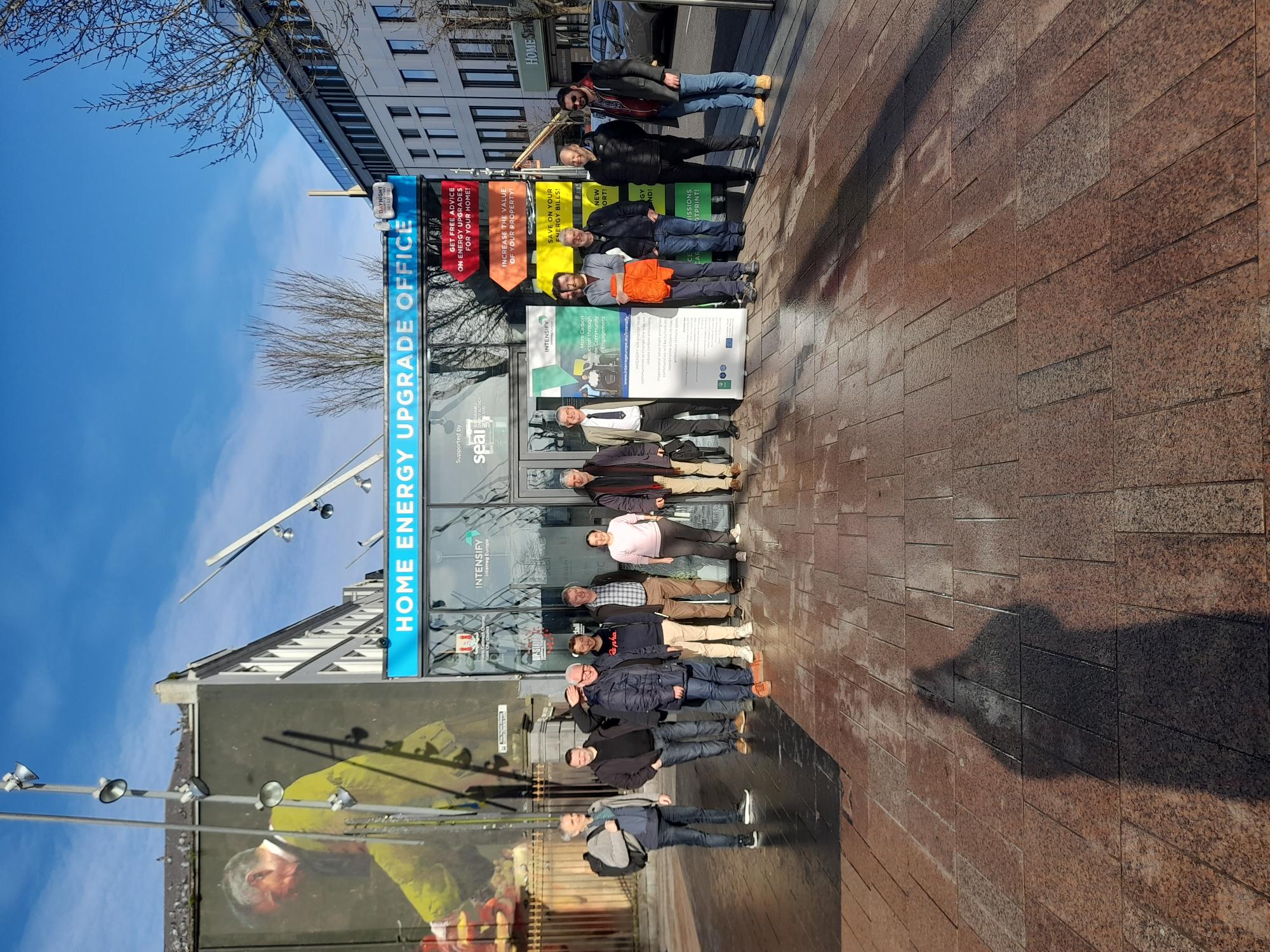
Cork City Council welcomed the Redwolf Project Partners to the Home Energy Upgrade Office funded by the Intensify Project
Retrokit supports the Intensify Project and its aims to reduce carbon emissions
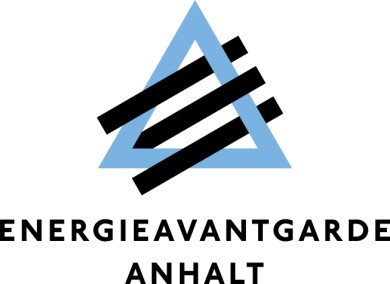
Energieavantgarde published its September to December 2022 newsletter
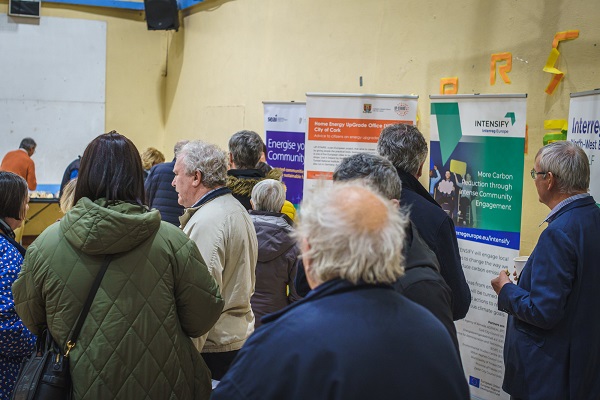
Cork City Council contributed to their Regional Action Plan for the Southern Region of Ireland at the Eirgrid Citizen Roadshow in Ballyphehane.
The Intensify Conference was hosted in Nano Nagle Place in Cork City showcasing the pilot actions developed from the partners Regional Action Plans.
Intense engagement at the Cork City Council Innovation Week promoting the Intensify Project
Cork City Council engaged with Cork Retired People’s Network about energy efficiency, contributing to their Regional Action Plan under the Intensify Project.
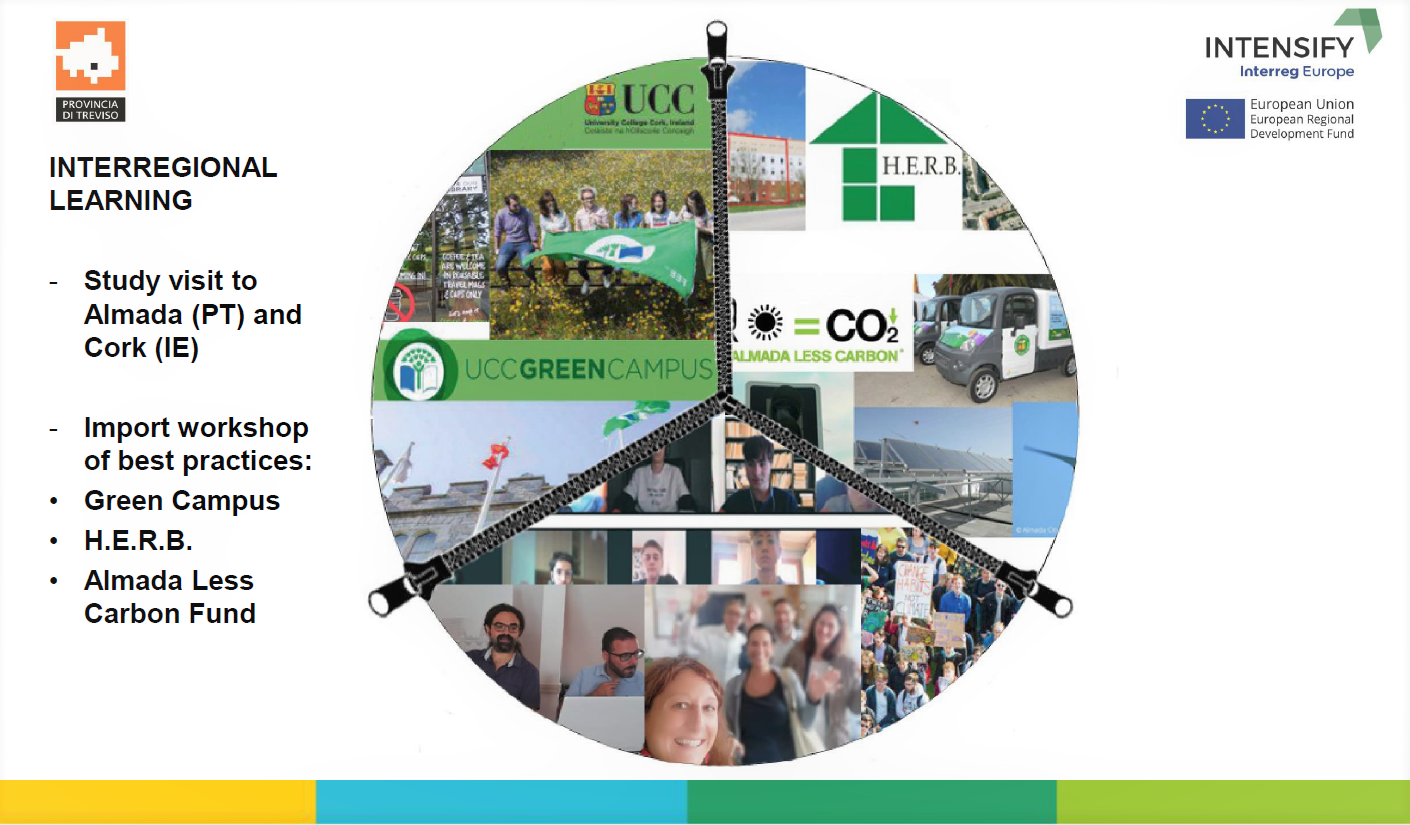
Intensify partner Treviso was asked to present the project at the Council of Europe Committee on Environmental and Health Crisis in Strasbourg.